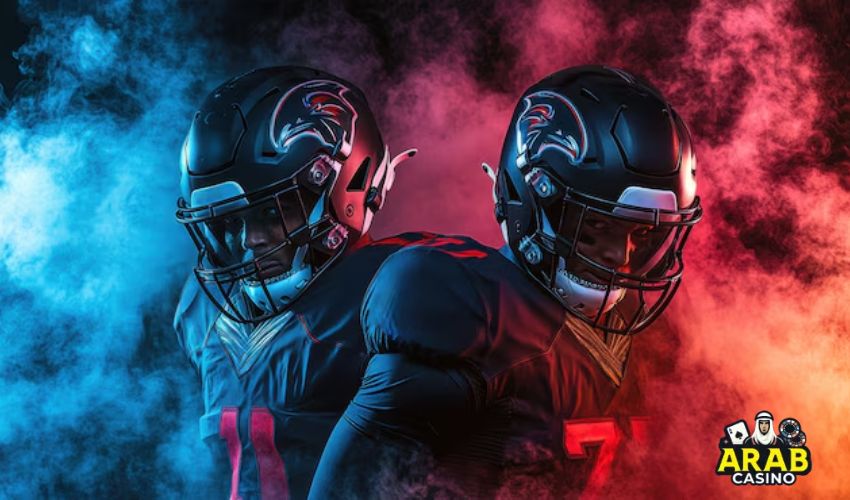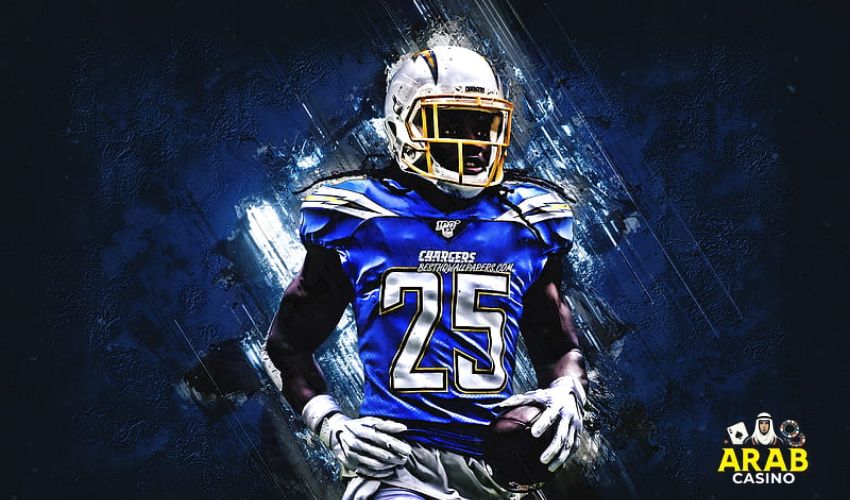The Octopus Explained
An octopus occurs under two specific conditions:
- A player must score a touchdown.
- The same exact player must then score the subsequent two-point conversion.
The eight total points scored (six for the touchdown, two for the conversion) give the event its name, inspired by the eight tentacles of an octopus.
A common point of confusion involves quarterbacks. A quarterback who throws a touchdown pass and then runs for the two-point conversion has not achieved an octopus. The player must have physical possession of the ball while crossing the goal line for both the touchdown and the two-point conversion.
For example, Philadelphia Eagles quarterback Jalen Hurts scored a rushing touchdown in Super Bowl LVII and then also ran the ball in for the two-point conversion. Therefore, this was a perfect illustration of a true octopus.
Where Did the Term “Octopus” Come From?

The term is a relatively new addition to the football lexicon. It was created in 2019 by Sports Illustrated writer Mitch Goldich. He wanted a catchy name for when a player scored a touchdown and the following two-point conversion. His friend suggested “octopus,” and the name stuck due to the eight-point connection.
Player Profiles to Watch for the Ideal Octopus
Not all players have a realistic chance of scoring an octopus. The feat is almost exclusively achieved by specific offensive player types who are central to their team’s goal-line plans.
The Mobile Quarterback
- Profile: A quarterback who is a primary rushing threat, especially near the end zone. These players can score on a designed run or scramble for a touchdown. Their coaches often trust them to keep the ball again on the two-point attempt.
- Examples: Jalen Hurts, Lamar Jackson, Josh Allen.
The Goal-Line Running Back
- Profile: A team’s primary ball carrier who handles the bulk of the work inside the 5-yard line. If this player punches in a short touchdown, they are a logical candidate to get the ball again for a two-point try from the 2-yard line.
- Examples: Austin Ekeler, Derrick Henry.
The Versatile Wide Receiver
- Profile: A wide receiver used in creative ways near the goal line. A player might score a touchdown on a jet sweep or a quick screen pass. They could then be the target on a similar short-yardage play for the conversion.
- Examples: Deebo Samuel, Cooper Kupp.
When Is an Octopus Most Likely to Occur?

An octopus is rare, so its potential appearance is tied directly to game situations that force a two-point conversion attempt.
Analyze Game Scenarios
Coaches typically only attempt a two-point conversion when analytics or the game clock demand it. A key situation arises late in the fourth quarter when a team scores a touchdown, cutting the opponent’s lead to two points (for example, a score of 28-26).
The scoring team will almost always go for two to try and win the game on the spot. Other scenarios, like trying to turn a 14-point deficit into a one-score game, can also prompt a two-point try.
Coaching Tendencies
Some coaches are statistically more aggressive than others. Teams led by analytically minded coaches are more likely to attempt two-point conversions in situations where traditional coaches might opt for a kick extra point. Following these coaching trends can give you a small edge when considering an octopus bet.
A Complete List of 2024-25 NFL Season Octopi
The 2024-2025 NFL regular season saw a notable number of these rare scores. According to data from Pro-Football-Reference, nine players successfully completed an octopus.
| Player | Team | Position | Week | Opponent |
| Davante Adams | Las Vegas Raiders | WR | 15 | Atlanta Falcons |
| Bijan Robinson | Atlanta Falcons | RB | 14 | Minnesota Vikings |
| Jerry Jeudy | Cleveland Browns | WR | 13 | Denver Broncos |
| Chuba Hubbard | Carolina Panthers | RB | 12 | Kansas City City Chiefs |
| Zach Ertz | Washington Commanders | TE | 11 | Philadelphia Eagles |
| Rhamondre Stevenson | New England Patriots | RB | 8 | New York Jets |
| Tucker Kraft | Green Bay Packers | TE | 4 | Minnesota Vikings |
| Jakobi Meyers | Las Vegas Raiders | WR | 3 | Carolina Panthers |
| Saquon Barkley | Philadelphia Eagles | RB | 3 | New Orleans Saints |
Octopus Odds: Betting “Yes” vs. “No”

Sportsbooks offer the octopus as a “Yes/No” prop bet, most commonly for the Super Bowl. The odds reveal just how unlikely it is.
- The “Yes” Bet: Odds for an octopus to happen are typically very high, often in the range of +1000 to +1400. This means a $100 bet would win $1,000 to $1,400. The high payout reflects the low probability of success.
- The “No” Bet: The odds for an octopus not to happen are extremely low, such as -2000 to -3000. A bettor would need to risk $2,000 just to win $100.
The “Yes” bet should be treated as a small, fun wager. It is a long shot with a potentially exciting payout. The “No” bet is the statistically probable winner by a wide margin, but it requires a large risk for a very small reward. For most people, it is not a worthwhile investment.
Also Read: Is Plus or Minus Better in Betting
A Final Tip for Finding Value
The octopus prop bet gains the most attention during the Super Bowl, but that may not be the only time to consider it. Look for value in late-season, high-stakes games. A divisional matchup where a team with a mobile quarterback and an aggressive coach is in a must-win situation can create the perfect storm for the desperate and creative play-calling that leads to an octopus.





